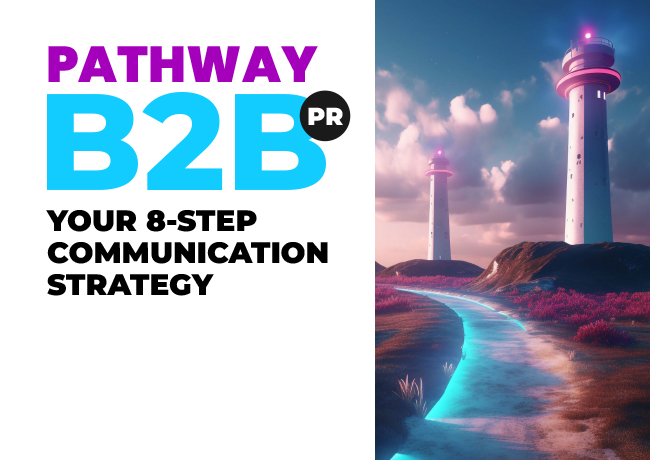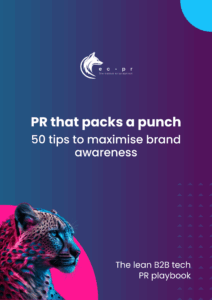
Why your buyer journey needs distinct PR content at every stage
I’m here to break the news: Buyer journey content isn’t easy, quick, or dirty. One size doesn’t fit all your audience.
Your customer goes through a series of steps before they buy from you. At every stage, they have different needs and wants. If your content doesn’t serve them optimally, they’ll pass you by.
What you need is to classify your audience into groups and then create unforgettable customer journey messaging to serve each category.
I’ll look into both of these steps. And by the time you finish this read, you’ll know why and how to create distinct content at every step of the buyer journey.
What happens when you have one clear message?
The purpose of distinct buyer journey content is to create personalisation. You need one clear message for every stage of your buyer journey, which leads them to the next. And when you do it right, it benefits both you and your customers.
Many brands implement this, but on a superficial level. There’s often more to be done to truly lead the pack.
If your messaging is dialled in, you save time.
“79% of the marketers have complete to partial automation in their customer journey,” a global survey found in February 2023. But how can a brand automate and personalise at the same time? This is only possible if they have one clear message for every group.
Segment your customers by their needs, problems, desires, and what type of content can help them. Tailor once and receive leads repeatedly.
This slight shift makes selling easier than ever before. You don’t have to personalise your messaging to every customer. You know what segment they belong to and what content you need to serve them at each buyer stage.
Out of respect for prospects, speak their language.
You don’t speak Chinese if your audience understands English, right? Take this ideology a step further. Every customer segment requires a different tone and words.
People who first encounter a problem you solve won’t understand jargon. In contrast, veterans and industry experts won’t appreciate low-level language. It’s important you identify your audience’s communication style and the extent of their knowledge to tailor your tone and vocabulary to the.
One clear message for each customer segment ensures you don’t mess up the language and tone.
Examples of how top brands segment their customers by type
Every top company and brand has categorised their buyers because they know it’s crucial in PR and marketing.
These categorisations can be complex and include multiple parameters like:
- Demographics
- Behaviour
- Geography
- Psychographic
- Socioeconomic
Every business is unique so requires different parameters to categorise its buyers.
Depending on your business type, your parameters might greatly vary from this list or include many more. Expert PR executives can guide you on this if you’re lost.
The larger the business, the more categories and sub-categories you’ll have and your customer segmentation will be more complex.
Once you have segmented your audience, create a buyer persona for each category. Define:
- The problems they face that your product solves
- Their pain points
- Their desires in life and at work
Here are how major brands use this type of segmentation to tailor their messaging, to serve as buyer journey messaging examples.
Waterstones: How a book retail brand classifies its customers.
Waterstones, a British book retail brand, segments its readers into 6, then more subgroups based on their interest in reading. Each group consists of a diverse age range of audiences.
- The Avid Reader
- The Collector
- The Academic
- The Commuter
- The Holiday Reader
- The Magazine Reader
Waterstones began using these segments in 2013 to identify where each persona might spend time, target them with communications in that location – be it digital or physical spaces – and adapt the tone of their messaging to the desires and challenges of that group.
The best bit about having clearly defined segments is that you can update some of your messaging for lagging categories, without affecting long-standing reliable buyers.
PayPal: How a global fintech company classifies its customers.
The largest international fintech company, PayPal, has two major buyer segments, which are sub-categorised into multiple groups. Bear in mind that this is a simplified version of their extremely complex user categorisation.
- Personal users: Online shoppers, donors and person-to-person (P2P) users.
- Business users: Enterprises, Small businesses and freelancers.
They also have a complex geographical categorisation. PayPal not only tailor their messaging to these segments, their entire on-platform communications are different, depending on the category of user.
Examples of how brands segment customers by readiness-to-buy
At EC-PR, we use the AIDA communication strategy to map out our customer journey from start to buying. The same applies for how we help clients map out their buying cycle:
A
Awareness
Interest
Desire
Action
In the first 2 steps, you build trust and familiarity with your audience. Your content doesn’t sell anything; rather, it talks about the buyer’s problems, desires and potential solutions.
The last 2 steps are when your audience is aware of your offer, and you have built trust. You sell them your product through promotional and fierce PR content.
Slack, a particularly interesting B2B company permeates its PR message at every opportunity, but always adapted to each stage in the buyer journey. Here’s an example of how their buyer journey messaging works.
A messaging software built distinct PR content for each buyer stage
Slack caters to the first two steps of their buyer’s journey, Awareness and Interest, through word of mouth marketing, paid ads, social media posts, and their blog.
The last two steps are where they sell, however. Relatable testimonials and customer stories built into free trial offers and regular – but not exhausting – email marketing.
All the above are crucial parts of any targeted marketing content and PR campaign, in fact. But it is at the stage of Desire and Action, that Slack takes an increasingly bigger bite out of the available market.
How to tailor your messaging to each stage in the buying cycle
Each stage in the buyer journey requires a different tone of voice. Your characteristic brand voice won’t change, but as your content serves different purposes at each stage, its tone changes a little.
I’ve touched on how this works at Waterstones, Slack, and PayPal. Now let’s talk strategic PR content.
Strategic communications help refine your plan and reassures leadership that your plan has merit and gravitas. Moreover, leadership wants to know that each messaging segment resonates with their audience.
It’s important to show that your messaging is not just a “fine set of words” which, as a PR company, we can do in our sleep. The most distinct buyer journey communications encompass 8 comms aspects:
- Who needs to be involved: For instance, sales, marketing, and R&D.
- Commercial context: Your business goals.
- Value proposition: What’s in it for the customer?
- Sector prioritisation: Which customer segment is most important for your goals?
- Target audience: Build their persona.
- Positioning statement: Curate a positioning statement based on this knowledge.
- Messaging for each stage of the buying cycle: Use the previously-explained AIDA.
- Validation: Test and validate your comms strategy.
8 Simple steps to a communication stratgy
Discover how you can develop a successful comms strategy that brings the entire company on the same page using these 8 principles.
Once you’ve ideated your communications strategy as pertains to the buyer journey. follow these two steps to curate personalised buyer journey messaging.
1Begin educational, low-commitment:
Approach the A and I stage with educational content and avoid salesy messaging. Introduce yourself as a solution to their problem, but don’t push readers to buy. Your messaging should be helpful and sincere to your audience.
Our Catalyst Executive Profiling connects editorials with all the LinkedIn personal communications and engagement that a company’s leadership team does. This way, leadership operates as an advocate and celebrant of media coverage and relevant messaging, and editorials get quality, thought leadership content. It is a straightforward – but not easy – way to build trust and familiarity with your customers.
2With authority built, become more persuasive:
The last 2 stages, D and A, are where you hold and exert authority. You have built credibility, and your audience just needs convincing before they buy from you. Talk directly to your customers about your offer. Be confident and authoritative. Talk about why they should choose you and what value you bring to the table.
Outsourced PR: Ensure you demand validation of the provider
If someone else is taking care of your comms strategy and PR content, ask for validation. Don’t take the strategy and put it into full swing without verifying their strategy. Do they have any data to back up the assumptions made? How is your provider so sure they’ll work?
You don’t make guesses in business. It’s a recipe for failure. You make decisions based on data and testing.
Validation is part of EC-PR’s comms strategy approach; we don’t separate it out. Clients get it as part of the project because it’s not an optional extra to validate a strategy. This is why we’re confident in our plans by the time we present them: we’ve stress tested them to within an inch of their lives!
How long might an external agency spend validating your strategy?
After receiving the introduction email, it might take a couple or three weeks from start to finish for a PR firm to validate a strategy. It depends on how responsive their cohort is and the extent of the changes to be implemented throughout the buyer journey.
Success following strategy validation by EC-PR
XTM, an international SaaS company that chose us to be their PR firm, have successfully heated up their comms strategy. Starting from an unfinished brand perception, we seamlessly synergised their comms strategy, brand positioning, and content with their company objectives, values, and audience.
We curated clear messaging for their clients depending on their company size and stage. Today, they have a strong message for each segment of their buyer’s journey.
By using a stress-tested strategy and catering to your customers at every step of their journey, you can design a successful PR strategy and meet customers where they are.
Download Pathway, your 8-step comms strategy, or give us a call to get expert assistance.

Your 8-Step Communication Strategy Guide
A comprehensive guide to delivering your business goals using intelligent and relevant messaging.


